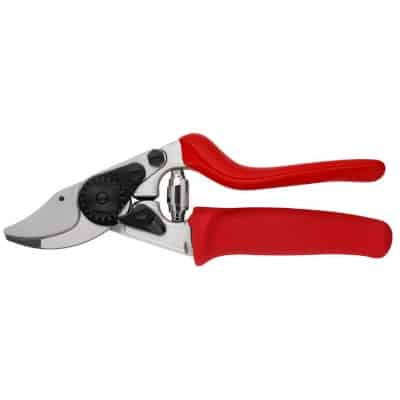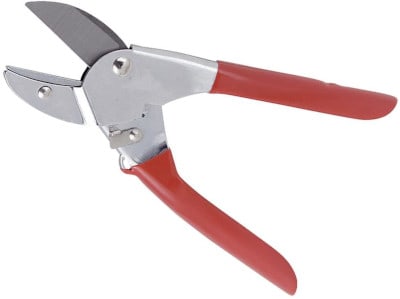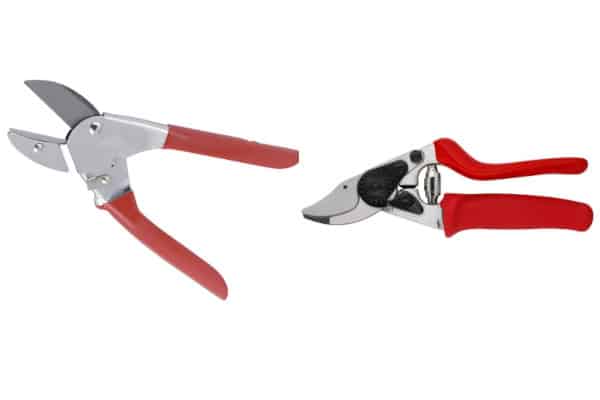If you are a gardener, you might know the importance of the right pruning tool required to maintain the beauty and growth of plants. Below is a comparison overview of the functionality of the most popular pruning tools: the bypass and the anvil. Any tool, bypass or anvil, serves the best when it is used in the right way. To make the most of these tools, you have to be clear about their construction and cutting action.
The Difference Between ByPass and Anvil Blades
A bypass pruner consists of a stainless steel curved blade and a curved base, also known as the hook. When you place the branch between the blade assembly and attempt to cut it, the steel blade comes down to meet the base while slicing the branch.
An anvil pruner has a blade and a flat anvil as a cutting base. The cutting action is no different from that delivered by a knife in combination with a chopping board.
The Right Tool for the Right Job
The range of pruning tools available today helps to achieve a variety of targets in gardening. If we narrow down the pruning tools, the most discussed ones are the bypass and the anvil. Both come in different designs and hence are practical in different situations.
Plants are very delicate. One reckless step can damage the stem and affect the growth of the cut part. Apart from gardening skills, the selection of pruners also makes a massive difference in the maintenance of plants. You need to understand the condition of plants and their cutting requirements before choosing a tool.
Bypass Pruners
If you keep a pair of scissors in mind, it will be easier for you to understand how a bypass pruner works. Just like a scissor has two razor-sharp blades, a bypass pruner also has a steel blade in a slightly curved shape. A curved base is there as the secondary blade joined with the upper blade via a pivot.

Upon exerting force on the handles, the two sharp-edged surfaces approach and bypass each other after cutting the object positioned in between. This type of pruner is relatively easy to use for beginners and professionals.
Keep in mind that bypass pruners need proper maintenance to deliver the desired results. Blades should be sharp and clean. For that, you have to keep the blades protected from rusting, dullness, and weather harshness.
When to Use
Bypass pruners prove to be the most effective shearing tool when we need a precise cut. The soft and delicate parts of plants require smooth and even cuts to heal and grow fast. Other pruners offer a harsh cut, leaving the branch or stem crushed. With a bypass pruner, you get a chance to get as close to the part supposed to be cut as possible.
The upper steel blade aims to go past the lower blade or hook when you press the handles, just like a regular scissor does. The upper blade first penetrates the plant surface very smoothly to prevent the crushing of the plant. When the blade leaves the plant tissue from the bottom, it also ensures a uniformly precise cut.
Overall, bypass pruners are an excellent choice to remove the unnecessary soft tissues from a live plant. It would be best to use this tool for cutting delicate branches and stems or clipping the buds of vegetable and fruit plants. However, bypass pruners are not good for cutting dead or hard parts of a plant.
Anvil Pruners
Another efficient pruning tool is an anvil pruner. In this type of pruner, there is a sharp blade usually made from soft metal. On the opposite side of this blade is a chopping-board-style table or anvil equipped with a groove. The anvil is made from steel in most models. However, many models also come with hard rubber- or plastic-made anvil. Both blade and anvil are spring-assisted, making this tool an excellent pick for executing multiple cuts effortlessly.

The anvil pruner does the intended job by bringing the two surfaces in contact with each other. Besides the design, an anvil pruner is also different from a bypass pruner in terms of cutting technique and results. The smashing technique is similar to what we see when we cut something on a chopping board with a knife.
Interestingly, anvil pruners are less likely to get damaged and go a long way without showing any signs of warping or wear-outs. Still, we recommend that you ensure this tool’s timely maintenance to keep on receiving excellent results from it. Keeping it moisture-free is very important to prevent the blades from rusting. Also, make sure that you clean it after every use and store it in a dry place.
When to Use
As we mentioned earlier, anvil pruners have a straight base on which the upper blade falls as a hammer falls on an anvil. Thus, the cut is rough, and sometimes it even crushes the material; however, the cutting potential is excellent. For this reason, anvil pruners are highly As we mentioned earlier, anvil pruners have a straight base on which the upper blade falls as a hammer falls on an anvil. Thus, the cut is rough, and sometimes it even crushes the material; however, the cutting potential is excellent. For this reason, anvil pruners are highly recommended for cutting dead, hard, and old branches, stems, and shrubs. You can also use this pruner for removing dead segments from a soft stem or branch when precision and neatness are not needed. If you cut soft parts with an anvil pruner, you will damage the plant tissues.
The way you hold this tool also matters. While using it, keep the blade on the upper side and the straight platform on the lower side.
Final Thoughts: Do I Need an Anvil Pruner?
Hobby gardeners often complain that they are unable to find suitable tools to cut the dead plants. Considering their blade action, anvil pruners are ideal for cutting unwanted parts that don’t require edge-to-edge smoothness. Also, anvil pruners are spring-loaded, so gardeners will find the tool handy for regular use.


